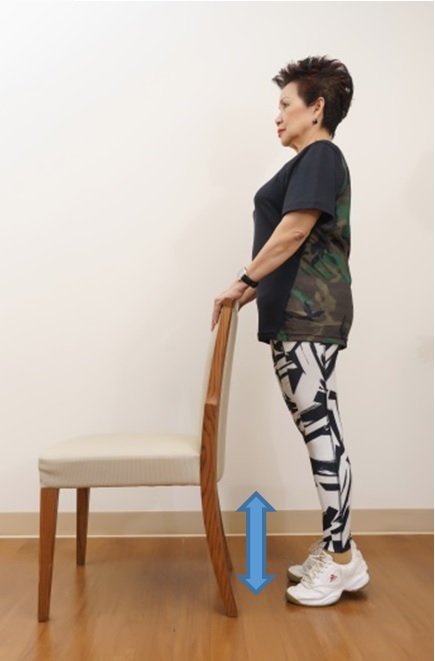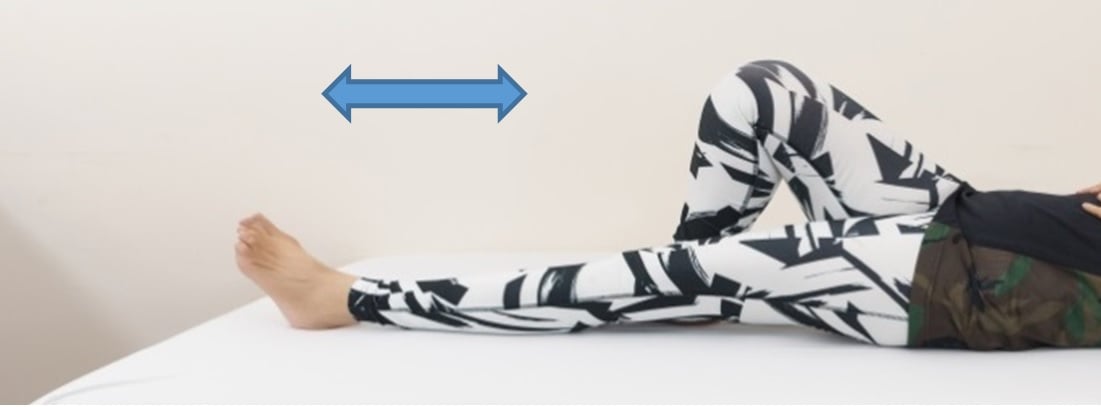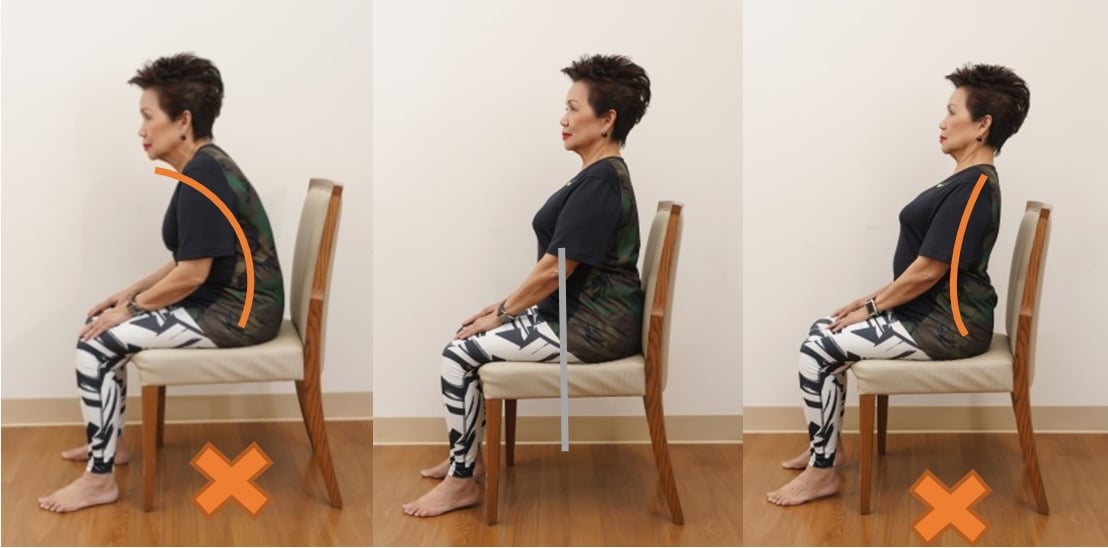Exercises to Prevent Common Problems in Older Adults
- Preventing Osteoporosis
Weight-bearing exercises are effective in strengthening bones by directly stimulating them as well as the muscles. Simple exercises that use your own body weight include walking, brisk walking, walking in place, weight lifting, tai chi, and bicycling.
- Preventing Falls
Exercises that prevent falls in older adults should focus on improving balance, muscle coordination, and increasing muscle strength. These exercises include:
Balance Exercises Using a Chair

Hold the back of the chair and raise one leg, then lower it back down.

Hold the back of the chair and rise up on your toes.

Hold the back of the chair, lift one leg out to the side, and then lower it back to the starting position.

Practice sitting down and standing up from a chair.*
* This exercise may not be suitable for everyone. Consider using support for balance if needed. Always consult your doctor or physical therapist before beginning this exercise.
Apart from these exercises, other recreational activities that focus on balance and muscle strengthening, such as Tai Chi, have been shown to help prevents falls.
- Preventing Urinary Incontinence
Regular pelvic floor exercises are recommended to improve continence and bowel function. These exercises can be performed while standing or sitting, with 50 to 100 repetitions each day to achieve results. Avoid holding urine regularly or for extended periods, as this can lead to abnormal bladder contractions and may increase the risk of urinary incontinence in the future.
- Reducing Pain from Knee Osteoarthritis
Exercises should focus on strengthening the muscles around the knee while avoiding high-impact activities that stress the knee joints. It is also advisable to avoid activities such as frequent stair climbing, squatting, kneeling, and prolonged walking.

Place your feet on the ground. Extend your knee and hold for a count of 10.
.jpg)
Extend your knee by lifting your heel off the floor. Hold for a count of 10.

Lie on your back. Drag your heel toward your bottom, slowly bending and extending your knee.
- Strengthening the Spine at the Neck and Waist
Increasing the strength of the muscles around the spine, stretching these muscles, and maintaining proper posture while sitting, standing, and walking are crucial for reducing muscle misuse and preventing accelerated deterioration.
Here are some examples of exercises to strengthen the spine:


The chin-in exercise involves contracting the neck muscles to draw the chin back while keeping it parallel to the floor without looking down. Hold this position for 5-10 seconds.

Sit with proper posture by keeping your body straight and avoiding excessive bending or arching of your back.

Contract your abdominal muscles and press your lower back into the bed.
Hold this position for 5-10 seconds without holding your breath.
- Increasing Shoulder Range of Motion
Shoulder stiffness and pain are common problems in older adults. To increase the range of motion of the shoulder joint and prevent muscle atrophy while maintaining joint strength, try the following exercises:

Wall Climbing
Stand facing a wall with your arms extended in front of you, fingertips touching the wall.
Climb the wall as high as you can, then slowly return to the starting position.
Aim to increase your climbing height with each repetition.

Rubbing the Back
Stand upright and hold a towel over your shoulder, grasping the ends of the towel in each hand.
Slowly raise the towel with the unaffected arm, then return to the starting position.